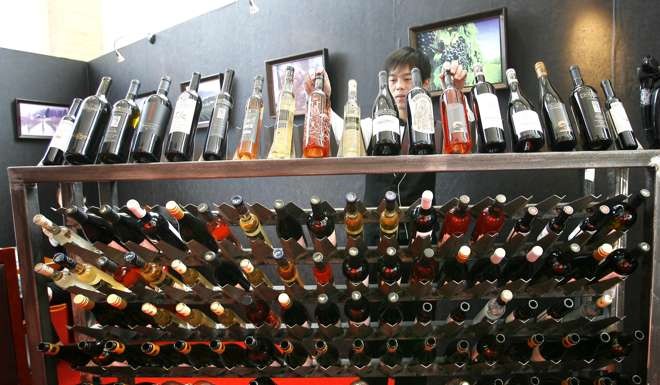
China becomes biggest Australian wine importer, overtaking US
Figures come amid increasing interest in wine among the Chinese middle class
China has for the first time overtaken the United States to become the biggest importer of Australian wine by value amid an increasing interest in the drink and the culture surrounding it among the Chinese middle class.
Imports of Australian wine surged more than 50 per cent to A$474 million (HK$2.8 billion) in the year ending in September, the body representing the country’s wine and grape producers said on Thursday.
Imports of bottled wine, which usually represents better vintages, grew by 48 per cent in the same period. Imports of wines priced A$10 or more per litre increased more than 60 per cent, to A$190 million, according to the latest statistics from Wine Australia.
“We’ve seen awareness of Australian premium wine improve along with dramatic increases in wine consumption, nascent consumer awareness and interest in wine and wine culture,” said chief executive Andreas Clark.
Most of the wines were sold in major cities including Beijing, Guangzhou and Shanghai, where consumption was closely linked to high consumer purchasing power, he said.
The growing number of tourists to Australia from the mainland has also helped. “While in Australia, many Chinese tourists will head to some of our most famous wine regions and this often results in the increased purchase and consumption of Australian wine when they return home,” Clark said.
The country received more than 1 million tourists from China last year, who spent more than A$7.7 billion, Australia’s tourism authority said earlier this year.

“The implementation of the China–Australian free-trade agreement and the reductions in tariffs has helped Australian wine exporters be more competitive,” Clark added.
He said that when the free-trade deal came into force, the agency’s regulatory services team saw a record number of applications for wine export certificates to China, posting a 48 per cent rise.
This demonstrated that many exporters were seeking to capitalise on the commercial benefits of the agreement, he said.
Mainlanders are becoming increasingly interested in Western drinks such as wine and coffee.
Jin Yang, chief product officer of online streaming company LeTV’s beverage arm Wangjiu.com, said Australian wine was quickly catching up with old-world French brands on the mainland, thanks to aggressive market promotion and new flavours.
“Most of our buyers are now young people born in the 1980s or 1990s. They buy a couple of bottles regularly,” Jin said.
Wine consumption in China is now estimated at 16 million hectoliters, after more than doubling in a decade, according to data from the International Organisation of Vine and Wine.
But there is still room to grow. The United States, with a quarter of China’s population, consumes up to twice the amount of wine as China does.
Australian wine accounted for 24 per cent of the value and 15 per cent of the volume of total bottled imports in China in the 12 months ending in May, previous reports from Wine Australia showed.
Chinese demand for Australian wine is also persuading Chinese companies and individuals to invest in vineyards and the wine industry there.
Grand Dragon, a major Chinese winemaker listed in Shanghai, announced last month it would purchase a 1,200-hectare vineyard in Victoria state for more than A$13 million.
“While there’s very limited land to grow grapes at home, domestic winemakers find it a better choice to produce or buy raw wine from Australia, which is quick and of good quality,” Jin said.

